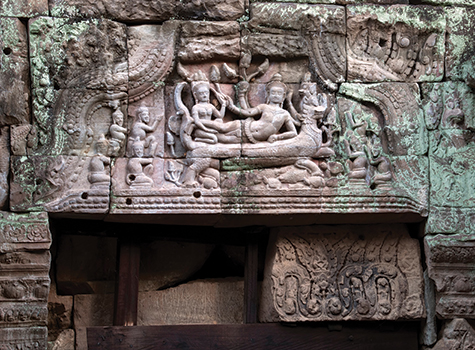
The weather is getting warmer. The days are getting brighter and longer. Finally, many of those burdensome layers of sweaters and jackets are being replaced for looser and cooler clothing. Bees are buzzing and pollinating. Flowers are blooming. Trees have sprouted young leaves. Parent birds are feeding their young. More people are going outside for walks. Baby geese are following the mother goose. And with the warmer weather, various animals are coming out of hibernation.
And that includes snakes.
The snake seems to invoke a certain polarity of responses. When the word “snake†is evoked, what are some thoughts that come to mind? Maybe slimy? Creepy? A Halloween decoration? If someone had a pet snake how would their personality be assessed in comparison to someone who had a Labrador as a pet? In certain philosophies, the snake seems to be associated with temptation and can be seen as wily, sinister character.
Maybe because the snake has been so maligned in certain societies and within certain ideologies, this is also one of the reasons I feel a sense of kinship with them. For instance, some may think that snakes are scary and with that fear would want to get rid of all the snakes. Yet, if that reality came true, a world with no snakes would mean that people are exposed to more diseases. In that scenario, there may then be a need for more antibiotics given to treat exposures to different bacterial diseases and a vicious cycle then would follow with antibiotic resistance. In essence, snakes help to keep the ecosystem in balance.
Growing up, I have seen snakes as part of the Indian arts and philosophies. Lord Vishnu rests on the divine giant serpent between the materialization of the cosmic worlds. In dance, I have played a part where I was churning the waters for the elixir for immortality. In that story, King Vasuki, a Snake, is used as a “rope†around the mountain that was used to churn the ocean. There are various interpretations on what was King Vasuki’s specific experience, but one interpretation is that when the initial poison was coming out of the ocean, this poison also had hurt Vasuki, and he surrendered thus to Lord Shiva, who then helped him to recover his strength. King Vasuki was then adorned by Lord Shiva as his necklace.
Pambatti Siddhar, one of eighteen Siddhars, was a well-known snake catcher when he was young. He would make medicines from the snake venom and sell them. For those who love to learn about science and medicine, these days, anti-venom is made from the venom taken from the snake, which is then injected into a horse. The horse creates antibodies from the anti-venom and then the blood from the horse is extracted and purified and then dried to a powder. This is then shipped to hospital pharmacies and used if patients need it from a snake bite. What may seem even more ironic, is that even the venom of the snake can have medicinal benefits. In small doses, it can be used in helping to prevent blood clots, which can cause strokes and heart attacks.
Pambatti Sidhdar was feeling ambitious and wanted to search for the valuable snake gem. This gem is produced when the snake venom hardens over time due to the snake not using all of its venom, and then deposits this either in the head or tail of the snake. The process for collecting this seems gruesome, in that the snake would have to be caught and the stone would have to be cut out of the snake. On his search, Pambatti encountered a sage named Sattaimuni Siddhar. When inquired, Pambatti told Saithamui that he was searching for this valuable gem from the snake. What Saittaimuni told him in return changed the direction of the life of Pambatti. Saittaimuni said that there was no external valuable snake he needed to look for, but the valuable snake was within himself.
In Indian philosophies and healthcare philosophies, the body is composed of centers of energy known as “chakras†or “wheels.†When these are “blockedâ€, these can manifest as different health problems. The base chakra is known as the muladhara chakra or root chakra. The location of this is thought to be at the base of the spine. The “root†of this chakra is identified with our primary identity and the question of “Who am I?†The muladhara chakra is envisioned as the cobra. The color identified with this chakra is red, and the mantra used for this chakra is “lam.†The sage Saittamuni, understanding this system deeply, told Pambatti that the person who is able to control the inner snake and thus open the different chakras in their body to the crown chakra, is the one who is truly fortunate. Pambatti, upon hearing this, is enlightened and so tells the wise Siddhar his name is Pambatti, which is suitable for himself as the Snake in him is dancing.
In Bharatanatyam, I have been to performances where the snake dance is performed. The music lyrics are from the poetry of Pambatti Siddhar. The language of the poem is Tamil. The raga that the music is usually set to is the Punnagavarli Raga and is associated with compassion and interestingly as well with snake charmers playing in this scale.
The snake dance is one of my favorite dances to watch as it shows the technical expertise of the dancer as well as the expression and flexibility of the dancer who transforms into the Snake before the audience.
The Snake starts dancing. It is sinuous and its forms is wavy and curly. The Snake resides on the Locks of Lord Shiva. (Nadar Mudi Mel Irrukum). Within the snake, it carries a bag of poison/venom. (Naccup-paiyai Vaittirukkukum). It is graceful and winding as it twists and revolves. The snake comes out from the ground where it lives within the underworlds. It turns in the shape of a circle and is Curvy. (Mandala-Mittudal valai vanap-pambe). It is awe inspiring and invokes fear. When it gets angry it hisses. The sight of the Snake can make an army of men shake with fright. (Kanda Padai nadungidak-katsiym petrai). Though there may be fear, it beseeches to not hurt it, or there will be consequences. The Snake is to be revered. It the adornment of Lord Shiva.
As the Snake remains dancing, those who are blessed through enlightenment, can become transformed from a Moorka, to a Siddha in society by understanding the Snake. Those Siddhas will advocate for the Snake and the balance of nature.
Dance Oh Snake. Continue to play in your Dance. This is your nature. Ada Pambay. Villaiyadu Pambay.
This series of articles is about the journey and unique insights of an adult dance student learning classical Indian dance and the experiences and perspective of taking classical Indian dance as both an American and an Indian.
Preethi Sriram is a classical dance enthusiast and lifelong learner of dance. Contact: [email protected]



